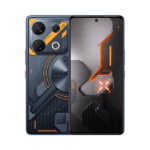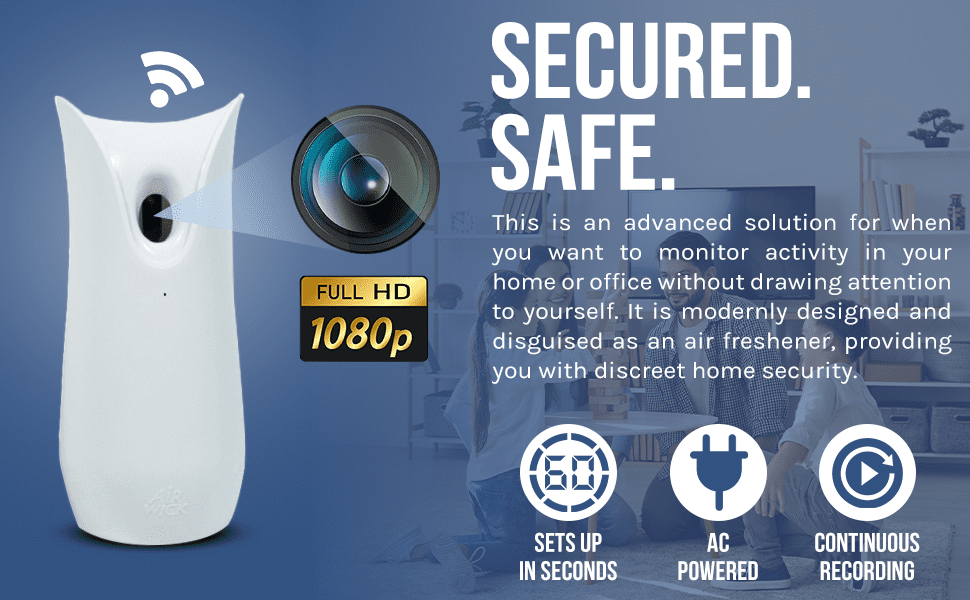Looking to shop digital cameras? Find a wide selection of high-quality digital cameras online.
Explore now and capture your memories in stunning detail. In today’s digital age, capturing moments has never been easier with the advancements in digital camera technology. Whether you’re an amateur photographer or a professional looking to upgrade your gear, shopping for a digital camera can be overwhelming with the numerous options available in the market.
From compact point-and-shoot cameras to advanced DSLRs, there is a perfect camera out there to suit your needs. With features like high resolution, image stabilization, and smart connectivity options, finding the right digital camera can significantly enhance your photography experience. Dive into the world of digital photography and discover the perfect camera that fits your requirements.

Credit: www.murderbooks.com
The Evolution Of Digital Cameras
Early Development
Early digital cameras were bulky and had low resolution. They revolutionized photography.
Advancements In Technology
Pioneering advancements in digital camera technology led to smaller, more powerful devices.
Types Of Digital Cameras
When it comes to capturing moments, having the right camera can make a world of difference. Let’s explore the different types of digital cameras: DSLR Cameras, Mirrorless Cameras, and Point-and-Shoot Cameras.
Dslr Cameras
DSLR cameras are popular among photography enthusiasts for their image quality and versatility. These cameras use a mirror mechanism to reflect light into the viewfinder.
Mirrorless Cameras
Mirrorless cameras are known for their compact size and interchangeable lenses. They do not have a mirror like DSLRs, resulting in a lighter body and quieter operation.
Point-and-shoot Cameras
Point-and-Shoot cameras are perfect for beginners or casual photographers due to their simplicity and ease of use. These cameras are compact, lightweight, and offer automatic settings for quick snapshots.
Key Features To Consider
When shopping for a digital camera, it’s crucial to understand the key features you should consider to make an informed purchasing decision. These features determine the camera’s overall performance and the quality of the images it produces. In this guide, we’ll explore the essential aspects to keep in mind when selecting a digital camera that meets your needs and preferences.
Resolution And Megapixels
Digital cameras are defined by their resolution, commonly measured in megapixels. Higher resolution results in more detailed and sharp images. When considering resolution, opt for a camera with at least 12 megapixels for standard photography. For professional photography, aim for a resolution of 20 megapixels or higher.
Optical Zoom And Lens Quality
The optical zoom and lens quality play a vital role in capturing distant subjects with clarity. Look for a camera with at least 3x optical zoom as it enables you to capture distant objects without sacrificing image quality. Additionally, prioritize cameras with high-quality lenses to ensure sharp, detailed images. A fast lens with a wide aperture is beneficial in low-light situations for capturing stunning photographs even in challenging conditions.
Low-light Performance
Low-light performance is a critical factor, particularly for capturing images in dimly lit environments. When choosing a digital camera, check for features such as a large sensor and advanced noise reduction technology to ensure excellent performance in low-light conditions. A higher ISO range allows the camera to capture well-exposed images in low-light without compromising on image quality.

Credit: www.shopping.com
Understanding Camera Accessories
Discover a wide range of camera accessories to enhance your digital photography experience at our online shop. From lenses to tripods, find everything you need to capture those perfect moments with your digital camera.
Understanding Camera Accessories
When it comes to photography, having the right camera gear can make all the difference in capturing that perfect shot. While the camera body itself is important, camera accessories play a crucial role in enhancing your photography skills and expanding your creative possibilities.
Lenses and Filters
Lenses are essential camera accessories that allow you to change the perspective, focal length, and depth of field. They have a significant impact on the quality and composition of your images. With a wide variety of lenses available, it’s important to understand which lens suits your style of photography.
– Wide-angle lenses: These lenses are perfect for capturing landscapes, architecture, and group shots, allowing you to capture a wider field of view.
– Telephoto lenses: Designed for zooming in and capturing distant subjects, telephoto lenses are ideal for wildlife, sports, and event photography.
– Prime lenses: Prime lenses have a fixed focal length, providing sharpness and wider apertures for low-light situations and creating a beautiful background blur.
Filters, on the other hand, are accessories that can be attached to the front of your lens. They serve a variety of purposes, such as reducing glare, enhancing colors, and protecting your lens from scratches and dust. Some common types of filters include polarizing filters for reducing reflections, neutral density filters for controlling the amount of light entering the lens, and UV filters for protecting your lens from harmful ultraviolet rays.
Tripods and Stabilization Gear
To achieve sharp and steady shots, especially in low-light situations or when using longer focal lengths, a tripod becomes an essential camera accessory. Tripods provide stability and minimize camera shake, ensuring crystal-clear images.
– Table-top tripods: These small, portable tripods are perfect for on-the-go photographers who need stability while photographing in tight spaces or on uneven surfaces.
– Standard tripods: The most common type of tripod that offers a sturdy base and adjustable height, ideal for landscapes, portraits, and long-exposure photography.
– Travel tripods: Lightweight and compact, travel tripods are designed for photographers who are always on the move. They provide stability and versatility without adding too much weight to your gear.
In addition to tripods, there are other stabilization gear options available, such as monopods and gimbals. Monopods are single-legged camera supports that provide stability while allowing photographers to move more freely, making them popular for sports and wildlife photography. Gimbals, on the other hand, are motorized stabilizers that help eliminate camera shake during video recording, providing smooth and professional-looking footage.
Memory Cards and Storage Options
Memory cards are essential camera accessories as they store and preserve your precious photographs. With their varying storage capacities and data transfer speeds, it’s important to choose the right memory card for your camera.
Here are some popular memory card formats:
– Secure Digital (SD) cards: These are the most commonly used memory cards, available in different sizes and speeds. They are compatible with a wide range of cameras.
– CompactFlash (CF) cards: Generally used in professional-level cameras, CF cards offer high-speed writing and larger storage capacities, making them ideal for burst shooting and continuous video recording.
– XQD cards: These high-speed memory cards are designed for professional photographers who require fast data transfer rates and reliability.
When it comes to storage options, it’s important to have a backup plan to ensure your photos are safe. Consider investing in external hard drives or cloud storage services to store and backup your images, providing peace of mind knowing that your precious memories are safe.
In conclusion, understanding camera accessories is crucial for photographers looking to elevate their skills and capture high-quality images. Lenses, filters, tripods, stabilization gear, memory cards, and storage options all play a vital role in enhancing your photography experience and allowing you to unleash your creative potential. Upgrade your gear to explore new possibilities and take your photography to new heights.
Mastering Photography Techniques
When it comes to capturing beautiful and captivating images, it is crucial to have a good understanding of various photography techniques. By mastering these techniques, you can elevate your photography skills and take your pictures to the next level. In this article, we will explore three essential aspects of photography that every aspiring photographer should know: composition and framing, exposure and shutter speed, and understanding lighting.
Composition And Framing
Composition and framing are fundamental elements of photography that can significantly impact the overall look and feel of your images. In simple terms, composition refers to how the elements within a photograph are arranged and organized. Framing, on the other hand, involves using various techniques to highlight the subject and draw the viewer’s attention to specific elements within the frame.
Here are some tips to help you master composition and framing in your photography:
- Use the rule of thirds: Divide your frame into a 3×3 grid, and position the main elements along the lines or at the intersections to create a more balanced and visually pleasing composition.
- Experiment with different angles and perspectives: Get low, go high, or try unique angles to add a sense of depth and make your photos more interesting.
- Create leading lines: Use natural lines or objects within the scene to guide the viewer’s eye towards the main subject.
- Pay attention to the background: Ensure that the background doesn’t distract from the main subject and complements the overall composition.
Exposure And Shutter Speed
Getting the right exposure and understanding shutter speed are crucial for capturing well-balanced and properly exposed photographs. Exposure refers to the amount of light that enters the camera’s sensor, while shutter speed determines how long the camera’s shutter stays open when capturing an image.
Here are some key points to consider when it comes to exposure and shutter speed:
- Learn to read the histogram: The histogram represents the distribution of light and dark tones in your image, helping you gauge whether your photo is overexposed or underexposed.
- Use exposure compensation: Adjust the exposure compensation to brighten or darken your image when the camera’s automatic settings don’t capture the desired result.
- Experiment with long exposures: In low-light situations or when you want to capture motion blur, try using longer shutter speeds to achieve stunning effects.
- Freeze the action with fast shutter speeds: When capturing fast-moving subjects, choose faster shutter speeds to freeze the action and avoid motion blur.
Understanding Lighting
Lighting plays a crucial role in photography, as it determines the mood, atmosphere, and overall quality of your images. Understanding different lighting situations and how to manipulate light can greatly enhance your photographs.
Consider the following tips to improve your understanding of lighting:
- Pay attention to natural light: Observe how different lighting conditions, such as sunrise, sunset, or golden hour, affect the quality and color of the light.
- Utilize artificial lighting: Experiment with different types of artificial lights, such as continuous lights or external flashes, to achieve specific effects and control the lighting in your photographs.
- Diffuse harsh light: Use diffusers or reflectors to soften harsh light and create a more flattering and even lighting on your subjects.
- Experiment with shadows: Shadows can add depth and dimension to your images, so don’t be afraid to incorporate them creatively into your compositions.
Editing And Storing Your Photos
Discover the best digital cameras at our shop for editing and storing your photos. Capture stunning moments with ease and keep your memories preserved for a lifetime.
Editing and Storing Your Photos
Capturing memories with a digital camera is an exciting experience, but what comes next? Editing and storing your photos allows you to preserve and enhance those precious moments. With the array of tools and storage solutions available, you can ensure your photos are safe and stunning. Let’s explore some popular options for editing software, cloud storage solutions, and the best practices for organizing and backing up your photos.
Popular Editing Software
When it comes to editing your photos, having the right software can make all the difference. Adobe Photoshop stands out as a leading choice, offering a wide range of features for professional-level editing. For those seeking a more user-friendly interface, Lightroom provides powerful editing tools with an intuitive design. Alternatively, GIMP offers a free and open-source alternative with a variety of editing capabilities.
Cloud Storage Solutions
Cloud storage solutions have revolutionized the way we store and access our photos. Google Photos provides a convenient option for automatically backing up your photos with its seamless integration with other Google services. Similarly, Dropbox offers a user-friendly platform for storing and accessing your photos from anywhere with its cross-device synchronization. Amazon Photos also provides an extensive option for Prime members, offering secure and affordable cloud storage for your images.
Organizing And Backing Up Your Photos
Organizing and backing up your photos is essential to ensure they remain safe and easily accessible. Utilizing metadata to categorize and label your photos can streamline the organization process. Creating a systematic folder structure and regularly backing up your files to an external hard drive or NAS (Network-Attached Storage) can provide an additional layer of security. Additionally, implementing a dedicated photo management software like Adobe Bridge can simplify the task of organizing and backing up your growing photo collection.
Choosing The Right Camera For Your Needs
When it comes to selecting the perfect digital camera, it’s crucial to consider your specific requirements and preferences. Whether you’re a professional photographer, an avid traveler, or simply looking for a camera for everyday use, there’s a camera out there to suit your needs.
Professional Photography
For professional photographers, features like high megapixel count, interchangeable lenses, manual controls, and RAW format support are essential. Look for cameras from leading brands like Nikon and Canon known for their performance and image quality.
Travel And Adventure
When embarking on adventures, a compact, lightweight, and durable camera is ideal. Consider cameras with weather-sealing, in-body image stabilization, and long battery life for capturing your travel moments seamlessly.
Everyday Casual Use
For casual daily photography, opt for a user-friendly, point-and-shoot camera with auto modes, fast autofocus, and good low-light performance. Brands like Sony and Panasonic offer excellent options for casual users.
Tips For Making The Most Of Your Purchase
Discover valuable tips that can help you maximize your digital camera purchase.
Exploring Photography Communities
- Join online photography communities to share insights and learn from others.
- Participate in challenges and engaging discussions to improve your skills.
Continuous Learning And Improvement
- Invest time in continuous learning through online tutorials and courses.
- Practice regularly to enhance your photography skills and techniques.
Exploring New Subjects And Styles
- Experiment with new photography subjects to broaden your creativity.
- Try out different photography styles to find your unique artistic voice.
Frequently Asked Questions For Shop Digital Camera
What Are The Key Features To Consider When Shopping For A Digital Camera?
When shopping for a digital camera, it’s important to consider features such as resolution, zoom capabilities, image stabilization, and autofocus. Other important factors include the size and weight of the camera, battery life, and the availability of manual controls.
Can I Use A Digital Camera For Both Photography And Video Recording?
Yes, most digital cameras on the market today are capable of both photography and video recording. However, the quality of video recording may vary depending on the camera model. It’s important to check the specifications of the camera to ensure it meets your video recording needs.
How Can I Determine The Right Type Of Digital Camera For My Needs?
To determine the right type of digital camera for your needs, consider your photography goals, budget, and level of expertise. There are different types of digital cameras available, including point-and-shoot cameras, DSLRs, and mirrorless cameras. Research each type to understand their features and capabilities before making a decision.
Conclusion
In the age of technology, digital cameras have become an essential tool for capturing life’s moments. With a wide range of features and styles to choose from, finding the right camera can be overwhelming. Shop digital cameras today to start capturing memories in high quality and vibrant detail.
Explore our selection and find the perfect camera for your needs.











